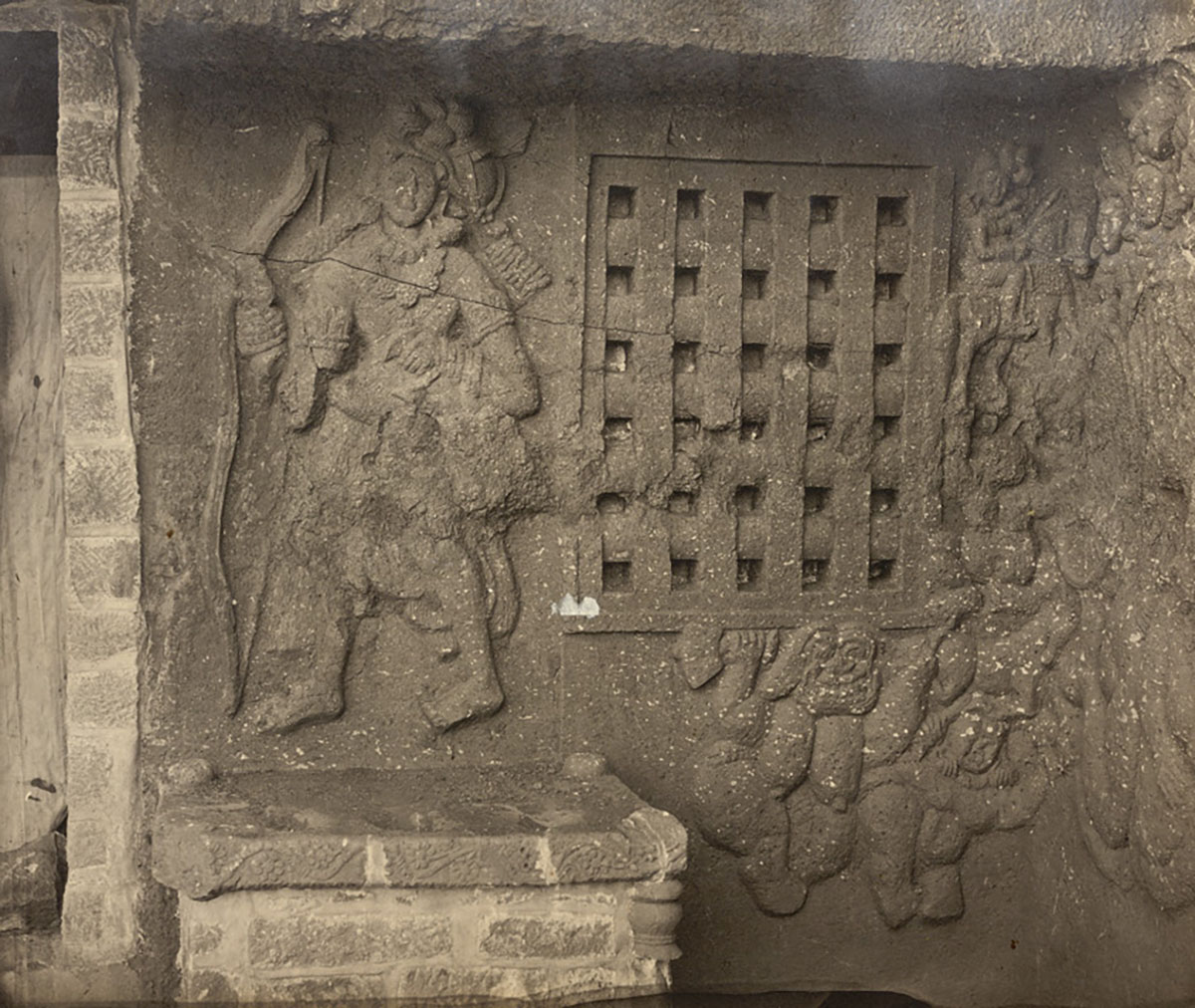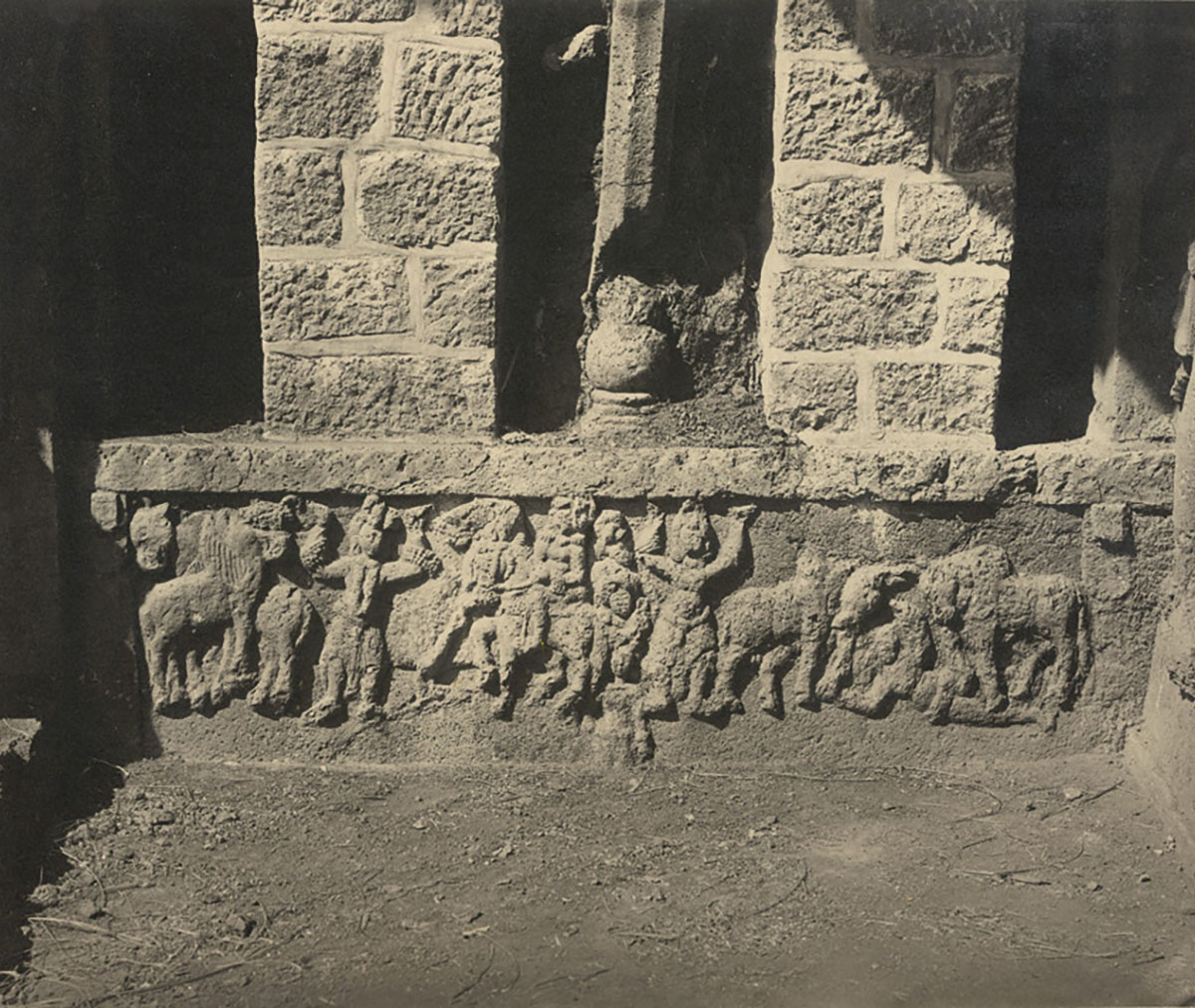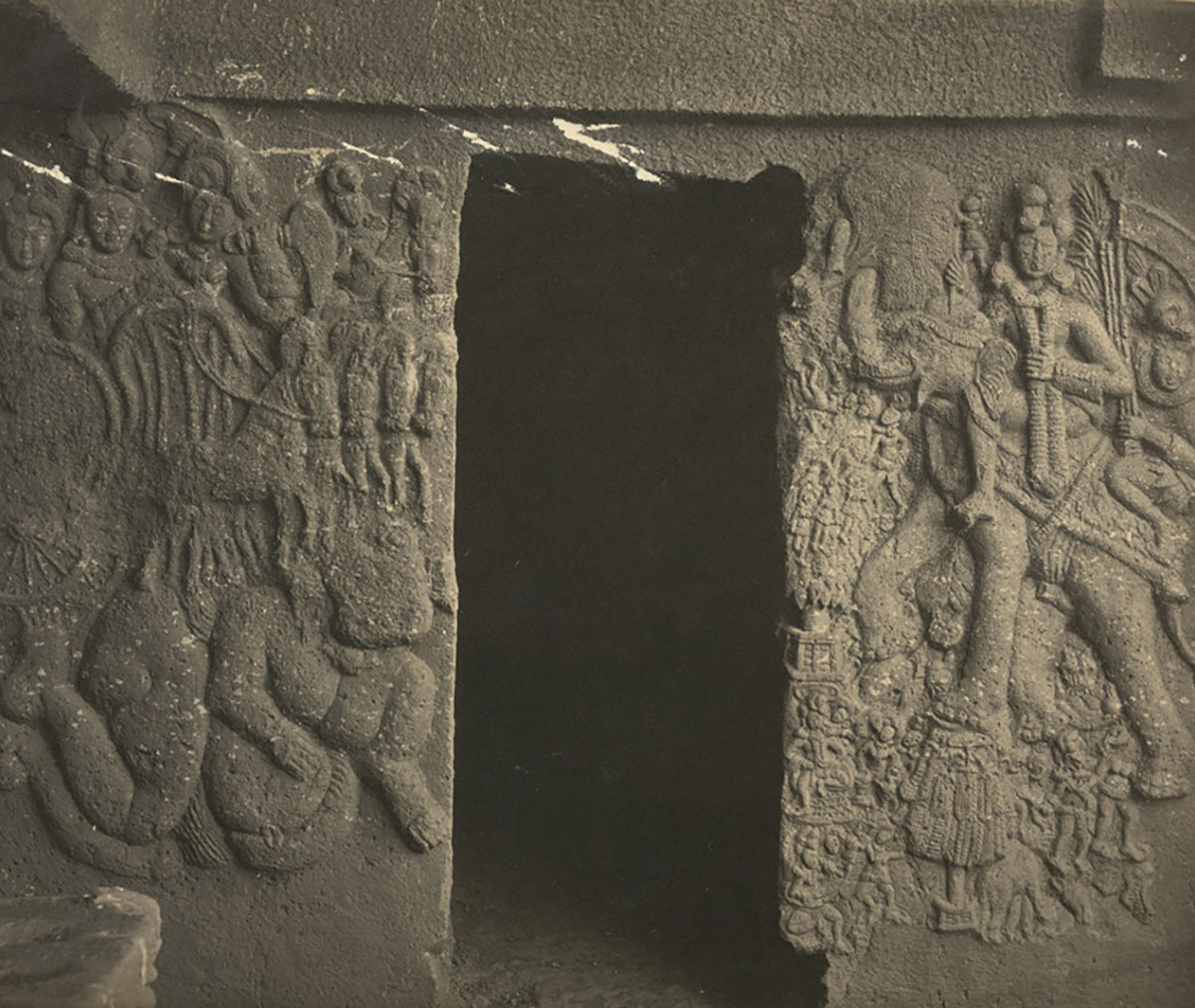ARTICLE
Bhaja Sculptures
These rock-cut sculptures, found in the Bhaja Caves in Pune, Maharashtra, represent some of the earliest advancements in rock and wood architecture in the world. Dated between the third century BCE and the second century CE, most of the Bhaja sculptures are carved in low-relief in stone and exist in a site particularly meaningful to Hinayana Buddhists. Similar to other sculptures dated to the Shunga Empire, these carved figures are depicted with flat faces, elaborate headdresses, jewellery and garlands. They are part of the cave complex which, according to scholars, was a place of learning for Buddhist monks who resided in the smaller chambers surrounding the main hall; these chambers are detailed with rock-cut beds and pillows. The twenty-two Bhaja caves, as well as the Karle and Bedse caves, are renowned for their main chaitya hall, which is considered to be the earliest of its kind, and viharas, as well as rock-cut sculptures of what have been interpreted as scenes from Buddhist and Hindu mythology.
A handful of the more prominent sculptures are situated in the main chaitya hall in Cave 12 and in the vihara in Cave 19. Above the doorway of the main chaitya hall is a large window which, along with the surrounding smaller windows and friezes, creates the appearance of a balcony with stone sculptures of male and female figures looking down at the entrance. The chaitya hall has over twenty-seven octagonal columns, of which four have low-relief carvings of flowers and Buddhist symbols such as the lotus, elephants and the dharmachakra. The sculptural embellishments on the columns are minimal, lacking capitals, and the stupa in the centre consists of a double railing pattern enclosing a chattri crowning capital.
Under the roof of the vihara are seven stupas interspersed with figures representing the seven Manushi Buddhas, including Shakyamuni. The entrance to the vihara is flanked by two of the most renowned and widely discussed narrative sculptural works at the Bhaja caves. The scene on the left wall depicts a human figure, widely accepted as the Vedic deity Surya on his chariot, accompanied by an attendant holding an umbrella and whisk. The chariot is being pulled by four horses, which are depicted crushing a gigantic, almost naked, demon. One interpretation suggests that the charioteer is Mandhata, the Chakravartin Ikshavaku king, who is seen conquering the mythical land Uttarakura. Scholars have also suggested that the narrative relief represents the overcoming of obstacles by the Buddha, as symbolised by the yakshas, the uprooting of humans and the demon.
The scene on the right depicts the Hindu deity Indra on his elephant cloud, airavata. The elephant’s trunk is depicted uprooting a tree from which humans seem to be dropping. This scene also includes a king on a throne, women dancing, people worshipping a sacred tree and a lion attacking its prey near the hind legs of the elephant. While the prominent presence of sculptures of Hindu gods such as Indra and Surya are sometimes seen as contradictory to the Buddhist architecture of the caves, scholars interpret the scenes as depicting unidentified Jataka tales and Buddhist mythology. In addition to the Hindu interpretation, the rider of the elephant and the seated king are both identified as Mara, whose daughters attempted to disturb the Buddha in his meditation. The scene also depicts Ashvamukhi, a horse-headed yakshi who, according to Buddhist mythology, was converted from cannibalism by the Buddha.
While the Bhaja sculptures are sparse and minimally embellish the caves, they bear great resemblance with the Bharhut stupa relief structures, especially of the yakshas and yakshis. Furthermore, there seems to be a strong, but so far under-researched, correlation between the Buddhist caves, and sculptures of the Western Ghats, and those in modern-day Andhra Pradesh. The Bhaja caves that house these sculptures are protected as a National Monument by the Archaeological Survey of India.
Bibliography
Our website is currently undergoing maintenance and re-design, due to which we have had to take down some of our bibliographies. While these will be re-published shortly, you can request references for specific articles by writing to hellomapacademy@map-india.org.









